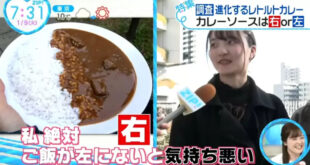The newly opened comprehensive entertainment facility “Qian Ke Wan Lai” near Toyosu Market in Tokyo has attracted much attention since its opening. Many of the seafood rice bowls in this facility are priced far above what is typically considered reasonable for Japanese people. As a result, some believe this may be a high-priced strategy aimed specifically at foreign tourists, and it has even been humorously referred to by Japanese netizens as “tourist rice bowl“.
Nevertheless, since its opening, media observations indicate that foreign tourists still enjoy these high-priced seafood rice bowls, raising a question: Have Japanese people really become poorer?
Trending: “Sightseeing Seafood Bowl”
The term “Sightseeing Seafood Bowl” has been frequently appearing in Japan’s online and television media recently. Around Tokyo’s Toyosu Market, a newly opened entertainment facility called “Senkyakubankai” has seen seafood rice bowl prices from some vendors exceeding two to three times the usual price. Even before the opening, Japanese netizens speculated that this was a high-priced strategy targeting foreign tourists, leading to the emergence of this term.
A few weeks after the opening, many media outlets found that only Japanese residents were complaining about the high prices of these “tourist donburi,” but foreign visitors seemed indifferent. As a result, discussions about “Japanese people becoming poor” have gradually increased, sparking widespread debate among Japanese netizens. For example:
According to a report from Shukan Shincho: “Uni donburi priced at 18,000 yen! The owner of the shop in Toyosu Market bluntly stated: ‘Japanese people have really become poor.’”
Bloomberg pointed out: “The sales of ‘sightseeing rice bowls’ are booming, and their high prices reflect that the cost of living in Japan has become relatively low.”
In addition, Japan’s Asahi TV also produced a special report on the numerous seafood rice bowls.
The menu here is marked in English, clearly aimed at attracting foreign tourists.
Many seafood rice bowls are priced over 6,000 yen, which far exceeds the acceptable range for ordinary Japanese consumers.
In some interviews, Japanese residents expressed that the prices are simply too high and hard to afford.
A Japanese person in their thirties lamented: “It’s impossible for us to spend 6,000 yen to eat a seafood bowl.”
Another Japanese person in their twenties bluntly said: “The prices are outrageous, it’s really ‘sightseeing bowl’!”
On the other hand, foreign tourists appear to be quite satisfied.
For example, a tourist from the Philippines enjoyed a seafood rice bowl priced at 4,050 yen, and he said: “Considering the quality of the seafood, I think this price is very reasonable.”
An American tourist said: “It’s rare for me to travel to Japan, so I’m willing to pay this kind of fee.”
They also emphasized that with the depreciation of the yen, prices have become more affordable. An American tourist ordered a tuna rice bowl priced at 6,980 yen and gladly accepted the price.
In addition, there are high-end seafood rice bowls priced over 10,000 yen in the facility, mainly purchased by tourists from overseas.
Would you choose to have a taste of it because of these high prices?
In the face of such pricing, would you feel tempted to give it a try?
 Go Tokyo Your Experience
Go Tokyo Your Experience



















